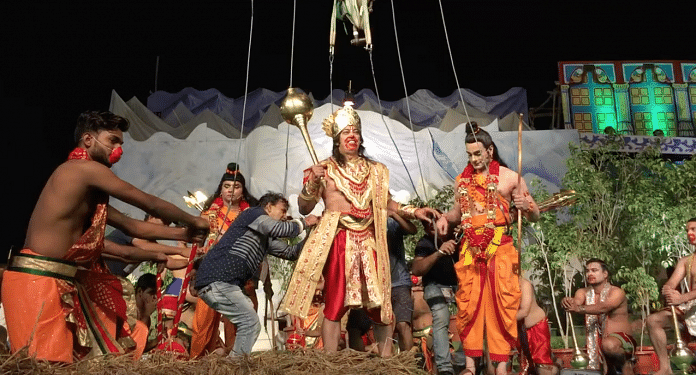Organisers of the Ramlila don’t tinker with the script. They have just been infusing productions with new technology and special effects.
Ramlila, the reenactment of Lord Ram’s 14-year exile, Sita’s abduction by Ravan, and her eventual rescue with the help of Hanuman, is a much-awaited fixture of the Dussehra season in north and central India.
Over the nine days of Navratri, it plays out on hundreds of stages across the region, often led by players involved in the production for decades and through generations. On the 10th day, giant Ravan effigies packed with crackers are burnt to celebrate Ramayan’s message of victory over evil.
Poised right at the start of the Diwali festive season, the Ramlila has drawn thousands of viewers across different cities for years on end. While organisers refuse to alter the script, many have imbibed technological advances and special effects in their productions to offer their viewers a better experience as well as new thrills.
ThePrint visits four Ramlilas in four parts of north and central India to see how the grand Dussehra tradition has evolved over the years, and how it has remained the same.
In Delhi, it’s Ramlila live
New Delhi: Angad, who plays Ram in the Lavkush Ramlila at Delhi’s Red Fort, raves about the way technology has transformed the production over the years. But as a live artiste, one thing sort of disturbs him.
High-powered cameras record the play and beam the actors onto three giant LCD screens at the site, as well as on televisions around the country (on Ishwar TV) and the Lavkush Ramleela Committee’s YouTube channel.
Where the actors once stood around a lone mic on the stage, each of them now has one pinned on their collars.
“Now we have to be very particular about our make-up and facial expressions,” Angad told ThePrint. “The cameras capture everything on stage. Nothing goes unnoticed.”
“The collar mics are very powerful and the cameras are too good,” he said. “There is no scope of relaxing even for a second once you’re on stage. Earlier, it was not so.”
Talking about the days of yore, Angad remembers how they had to scream their dialogues to ensure the entire audience heard them.
“The quality of mic was poor. Now it is not so,” he said. “The audio systems have improved in quality and affordability.”
Vikas Sharma, who handles the electronic system put in place for the show, told ThePrint that “the number of equipment has gone up massively in the past three years”.
“There is a much better lighting system [too]. After all, it is a TV show and has to be perfect,” he added.
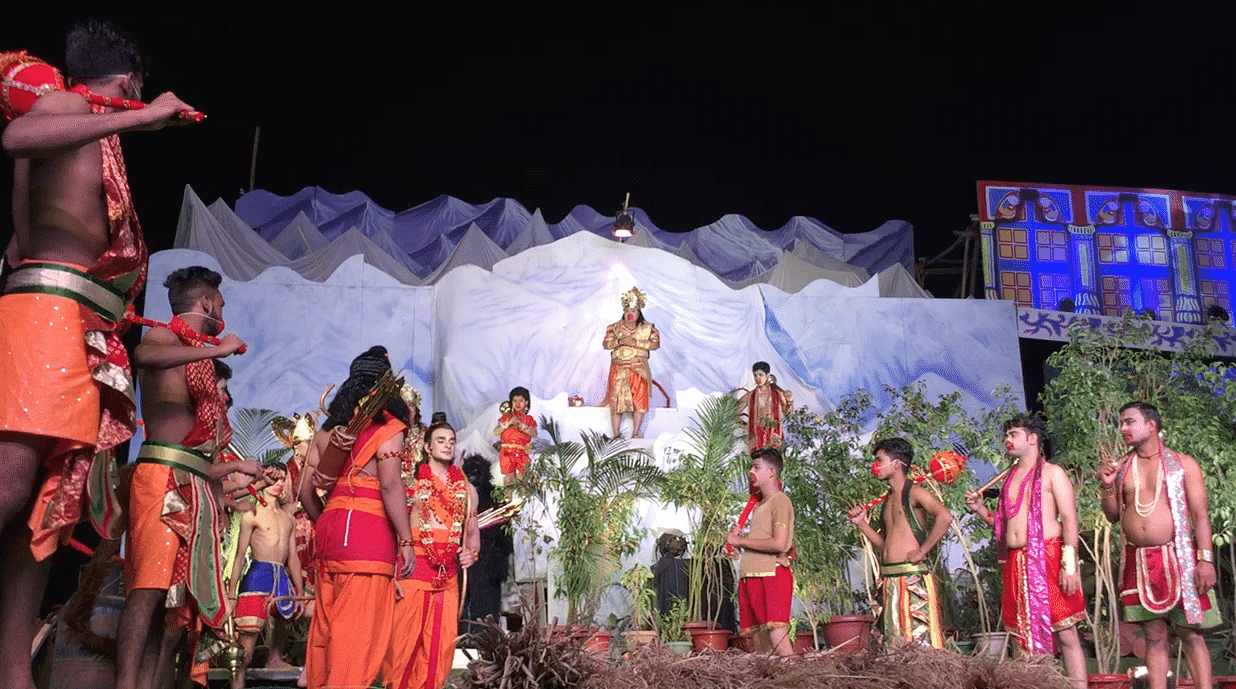
Ramnaresh, a migrant from Uttar Pradesh who has been catching the show for more than a decade, vouched for the fact that it had become much better of late.
“With the quality sound system, the show has become much enjoyable,” he told ThePrint. “There is more liveliness. And they have put big TV screens at many places around the stage, so it’s easier to watch the show live.
“Earlier,” he added, “If you couldn’t get a place near the stage, it was difficult to identify the characters.”
Ashok Aggarwal, the president of the organising committee, added that technology had come as a boon for the people who may not always be able to catch the Ramlila at the Red Fort.
“It has made it easier for people who can’t visit Delhi to watch this Ramlila… to view it from wherever they are,” he added.
Asked about the transformation, he said it helped that the equipment didn’t cost much. “Quality electronic devices are available at reasonable prices. So costs are never high,” he said, without revealing the exact price.
Also read: Hindu gods like Rama & Shiva have six packs now to kill bad guys, like American superheroes
In Chandigarh, Hanuman arrives for Sita’s rescue on a zip-line
Chandigarh: Lip-sync. Actors zooming on to the stage on a zip-line. A revolving stage that spares viewers the wait between scene changes.
Ramlila has become a big affair in the tri-city area of Chandigarh, Mohali and Panchkula over the past few years, with the number of performances going up from 20-something to nearly 100 this Dussehra season. And technology is helping organisers bring something different to their audiences, even as they refrain from tinkering with the script itself.
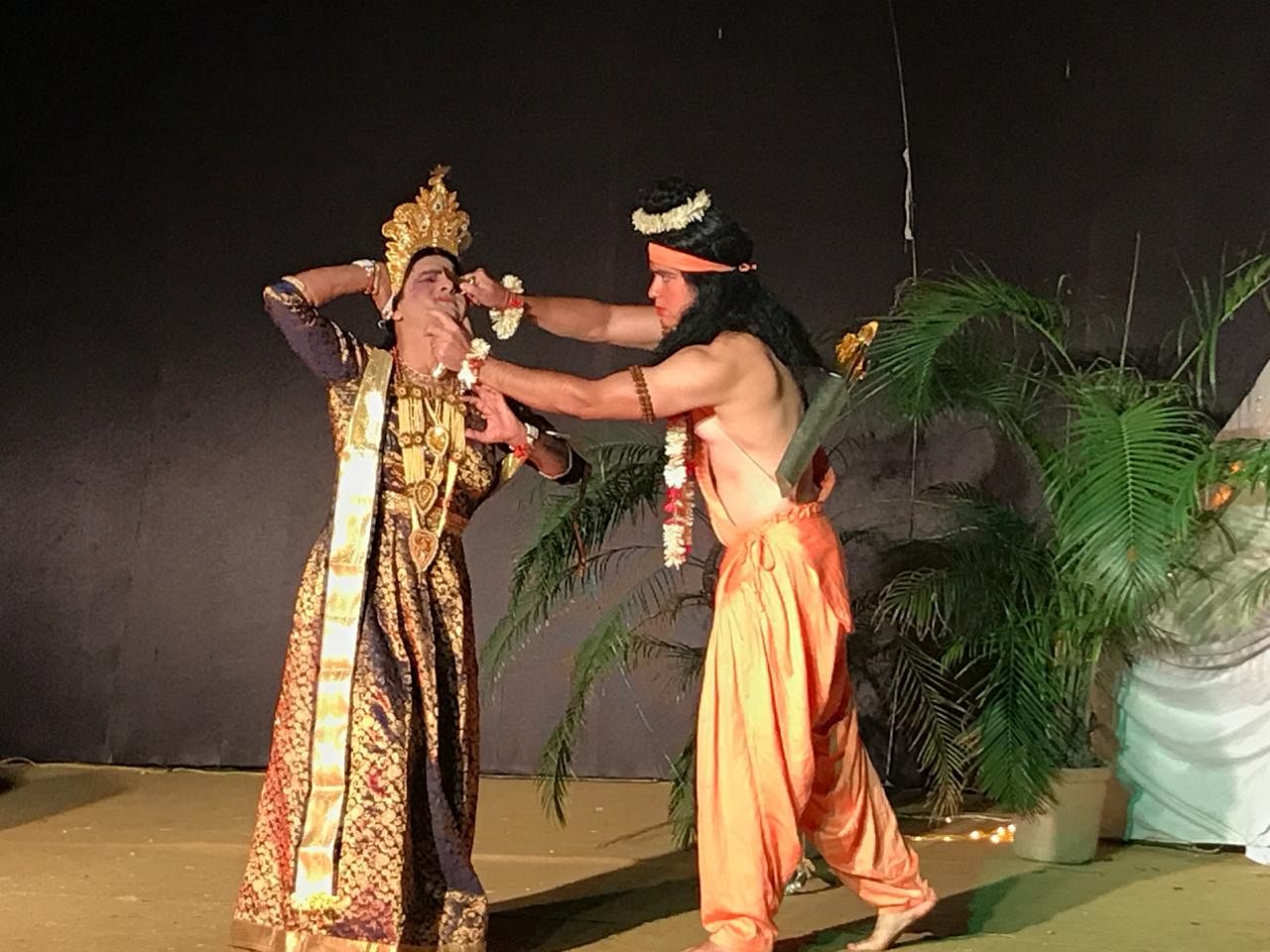
“Ours is a hi-tech Ramlila, because it is pre-recorded,” said Rajesh Bagga of the Shree Ramlila Committee, which has been organising a production at Chandigarh’s Sector 17 since the late 1950s. “The actors lip-sync the dialogues,” he added.
At the Sector 7 Ramlila, Hanuman, the Ramayan’s flying hero, enters and exits the stage on a zip-line.
“Crowds go berserk chanting ‘Jai Shri Hanuman’,” said Ajit Kumar, the organiser. “This year, we also used pyrotechnics to have real fire emanate from the Laxman Rekha.”
In Sector 29, the Ramlila held on the premises of the Ordnance Cable Factory (OCF) is performed on a revolving stage, reportedly the only one in North India.
“We don’t have breaks after a scene ends,” said Vikram Malhotra, the organiser. “The revolving stage is actually four stages… While one scene is going on, three others are being readied,” he added.
This Ramlila, too, has Hanuman and Jatayu entering and exiting the stage on a zip-line. “We started it,” said Malhotra, adding that the production this year included an additional scene depicting Ravan’s birth.
Organisers say the popularity of the Ramlila has seen a revival in the tri-city area, where the production largely attracts the lower and middle classes.
“Ramlila has revived because people are bored of TV,” said Rakesh Kumar, chief of the Chandigarh Ramlila Committee, which has been organising Chandigarh’s oldest Ramlila, the one at the Sector 22 Nehru Park, since 1957.
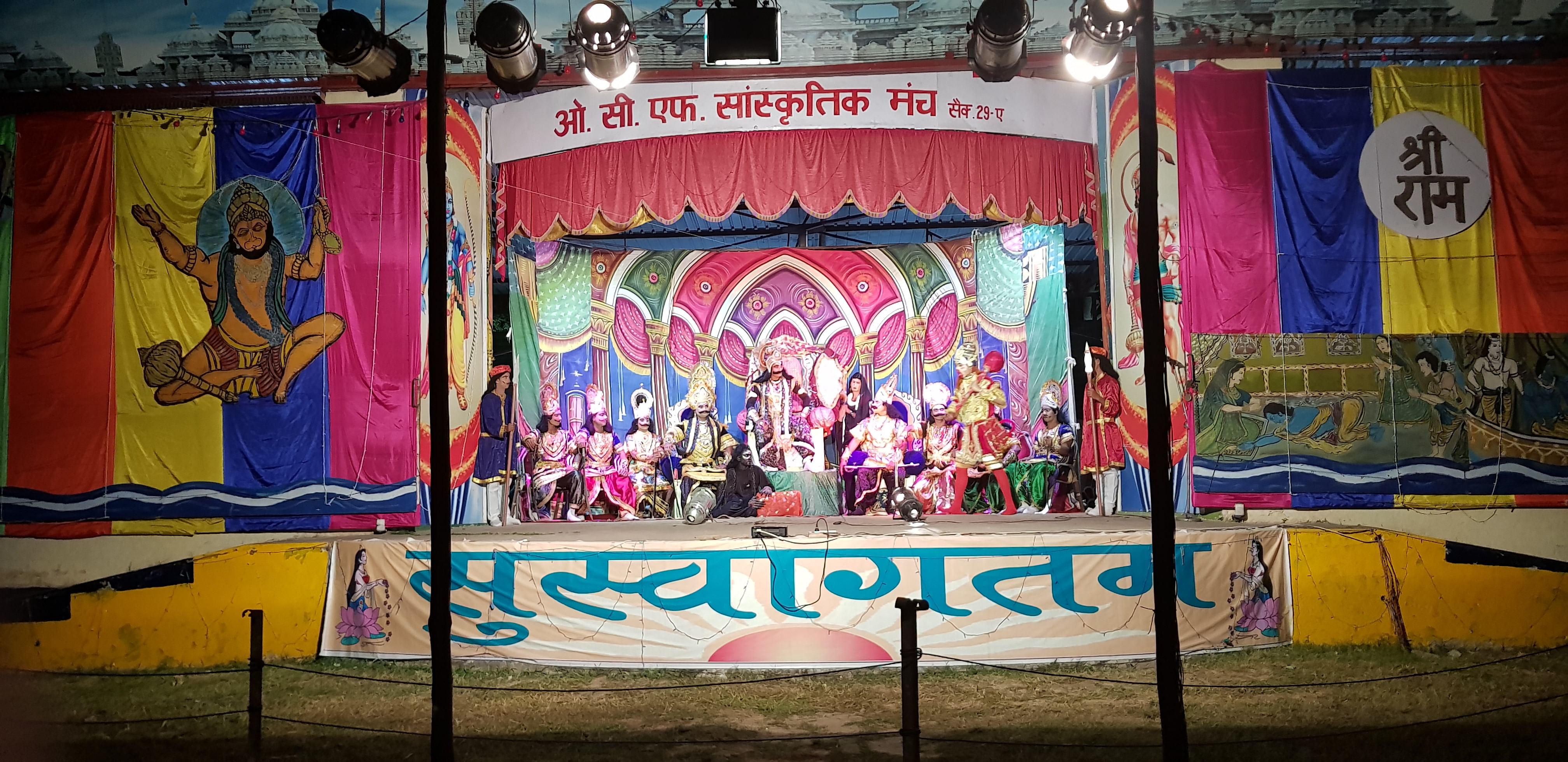
“Earlier, we had a very small crowd because everyone was hooked to news and TV serials,” he added.
This revival has forced organisers to offer viewers something bigger and better, including fancier stages, better costumes, as well as special effects. Organising a Ramlila costs anything between Rs 5 lakh and Rs 15 lakh. If it is followed by Dussehra festivities, the cost of creating a Ravan effigy is additional.
In 2008, UNESCO put Ramlila on its ‘Intangible Cultural Heritage of Humanity’ list. Almost everyone involved in keeping the tradition alive is driven by dedication.
Barring a few shows where professional actors are hired, the participants at most Ramlilas are unpaid volunteers. The organisers, however, hire sound and light experts to play live background music, sing bhajans, and for other effects.
Months before the festive season, organisers start going door-to-door to seek donations from their localities.
“There are times when we ring the bell of a house and children open the door,” said Vikas Sood of the Sector 7-based Navyug Ramlila and Dasehra Committee. “They then shout out to their mothers and say ‘maangne waale aayein hain (charity seekers are here)’.”
“We feel bad but whatever we are doing is for Lord Ram,” he added. “And for him, there should be no ego.”
Despite the changes over the years, however, some things remain the same. Most Ramlila stages in this part of the country don’t allow women actors, with men playing the female characters.
“On traditional Ramlila stages, women are not allowed because of maryada,” said Rakesh Kumar. “But it become a logistics issue. Ramlila is held in the open and we don’t have any security arrangements. The crowd is not controlled. Shows begin at 9 pm and go on till midnight. We will not be able to give the facilities and security women artistes deserve.”
In most cases, actors associated with each Ramlila are a close-knit group, with the same people taking on the same roles year after year, often handing them down generations.
Men of the Bagga family, for example, have been playing Ram at the Sector 17 Ramlila for three generations now.
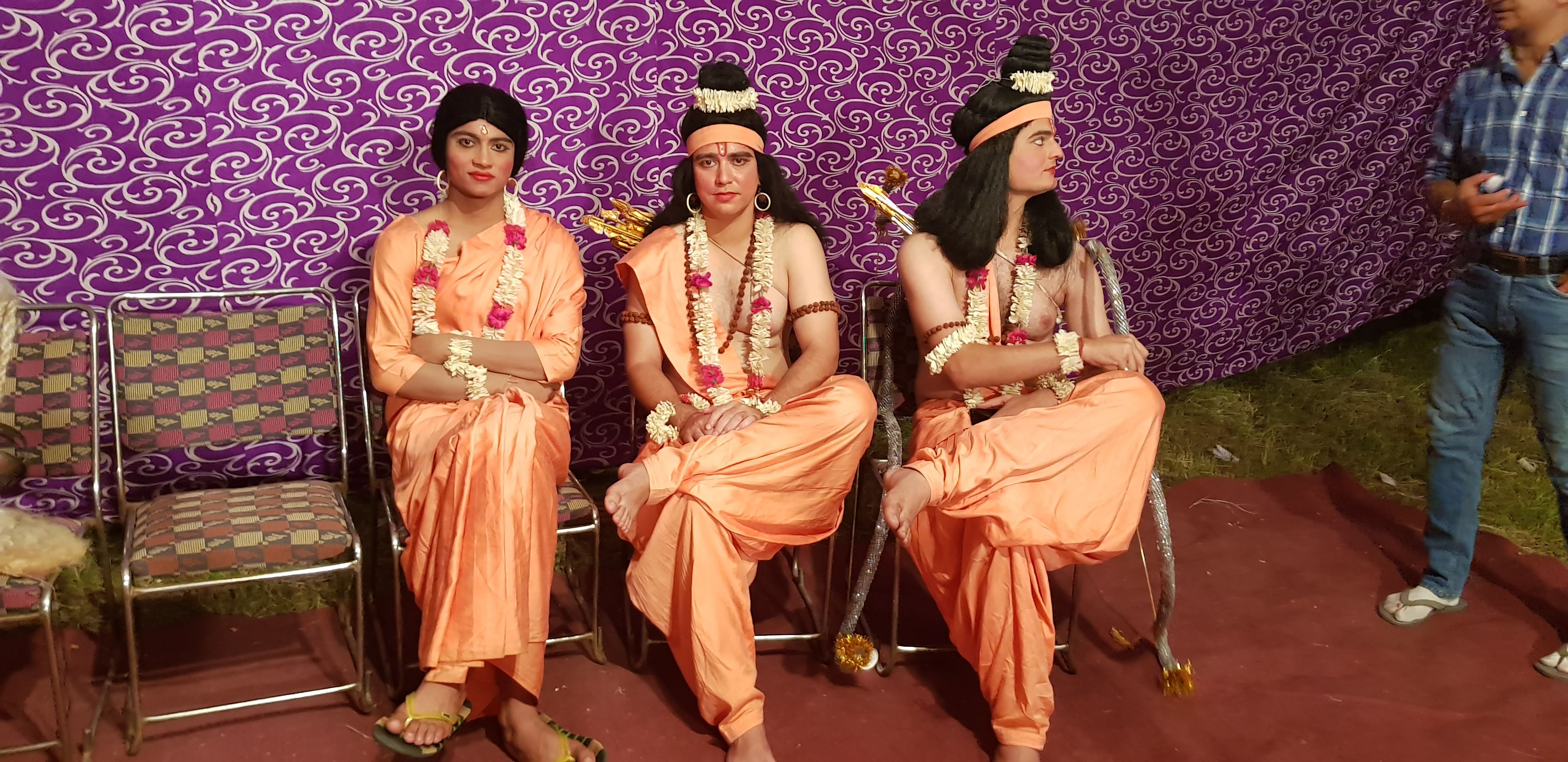
“My father Sohan Lal played Ram from 1961 to 1980,” said Rajender Bagga, who runs a tailoring shop in Chandigarh. “Then I took over and continued till 2006. Now, my son Gaurav plays Ram.”
Most organisers and actors are also expected to follow a strict code of conduct from Day One of Navratri. No one can drink, smoke or eat non-vegetarian food during Ramlila. The lead actors sleep on the ground, even at home, and they also remain celibate.
“I have to stay away not just from my wife but cannot be friendly with men either,” said Gopal of Sector 22, who has played Sita for 22 years
However, Pradeep Kumar, who has directed the Sector 7 Ramlila since 1979, said expecting discipline from contemporary actors was proving to be a tall order.
“Earlier, actors wanted to learn,” he said, “This generation has lost patience, and doesn’t tolerate any disciplining,” he added.
This Bhopal Ramlila is tailored for the busy urbanite
Bhopal: Shiv-Parvati, Radha-Krishna and Durga may have nothing to do with the Ramayan, but one of the biggest Ramlilas in Bhopal is incomplete without them.
Over the past two years, artistes dressed as Hindu gods and goddesses have performed dances during breaks in the Ramlila at Bhopal’s TT Nagar, where the production, adapted for the busy urbanite, is different from your regular affair in more than one way.
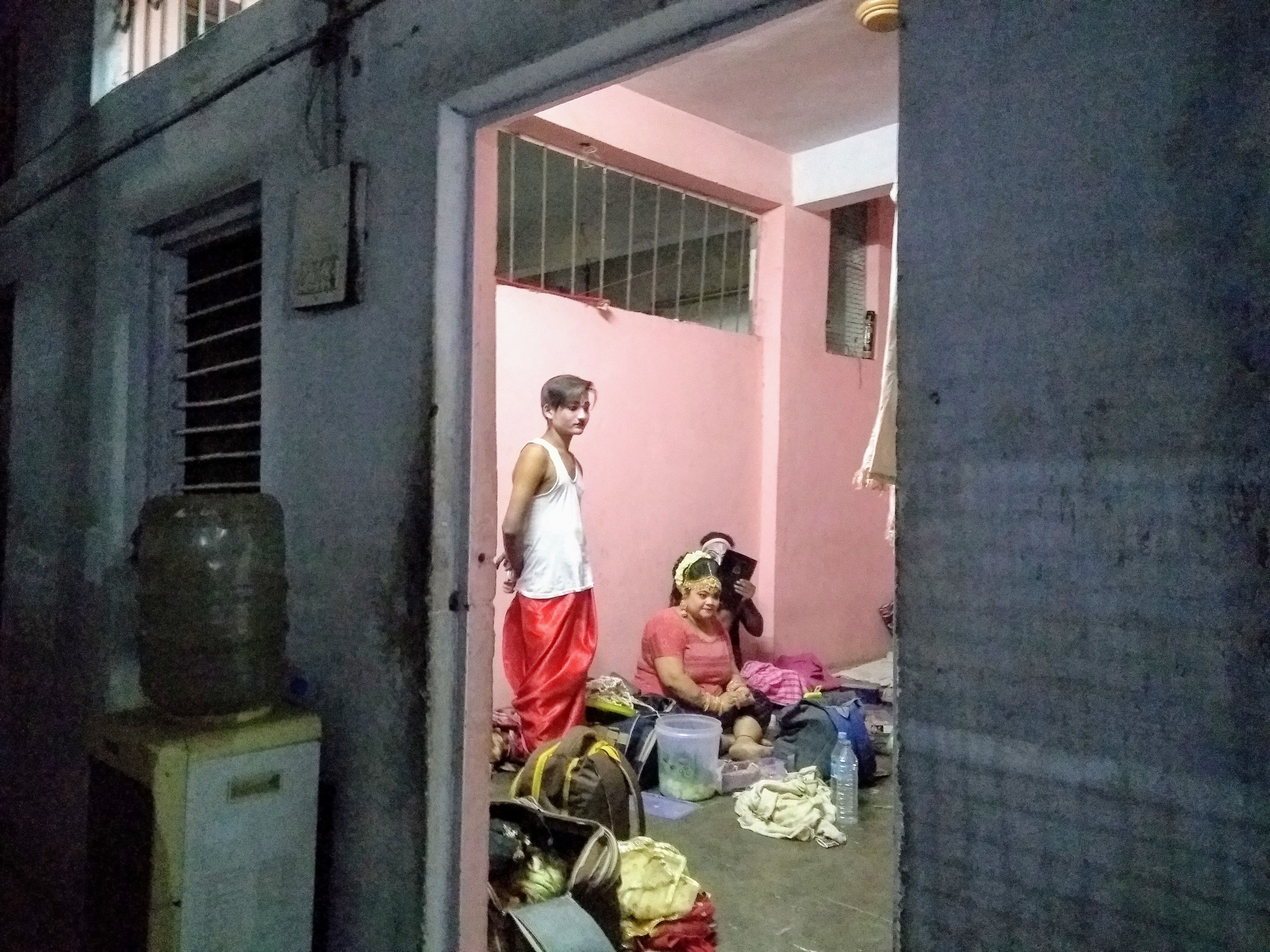
Instead of sticking to the template, the performance here recreates different parts of the Ramayan every year for a shorter playtime. The artiste troupe from Ujjain that performs the Ramlila recreated Bali Vadh in 2017, and is performing Meghnad Vadh this year. The chosen episode is enacted over the nine days of Navratri.
Asked about the changes, Vishnu, who plays Ravan, said the shorter performances were the need of the hour. “The tradition of showing the full Ramlila has gone today,” he added, “People aren’t really interested in investing that much time.”
Although the Madhya Pradesh capital is dominated by Hindus, the tradition of Ramlila here just goes back around 30 years. The one at TT Nagar began around 15 years ago.
“The technologies have changed, so have the techniques of narration, but, at its core, Ramlila is all about the victory of good over evil,” said Jagdish Yadav, a local councillor who has been funding the TT Nagar production for nearly 15 years.
Yadav has owned a medical store over the past three decades, but his heart, he said, still lay in designing jhakis or floats, his family business.
“During my childhood, I used to build them with my father,” he added, “I knew the aesthetics of prop building and lights. About 10-15 years ago, I thought of celebrating the Navratri and it has continued since.”
As for the costs, he said, the budget for the Ramlila had increased from around Rs 1 lakh in the early 2000s to about 10-12 lakh today. Yadav added that he funded the whole thing himself.
Mathura’s Ramlila is a no-frills affair
Mathura: Three years ago, at an over-a-century-old Ramlila in Mathura, the actor playing one of Bali’s widows whipped out a phone on stage. He then clicked a selfie with the actor playing the dying Bali, and said ‘Selfie Le Le Re’ in a mock-Salman Khan voice, referring to the song from the 2015 hit Bajrangi Bhaijaan.
The organisers, who pride themselves on enacting a Ramayan true to its character, were not pleased and the actor was pulled up.
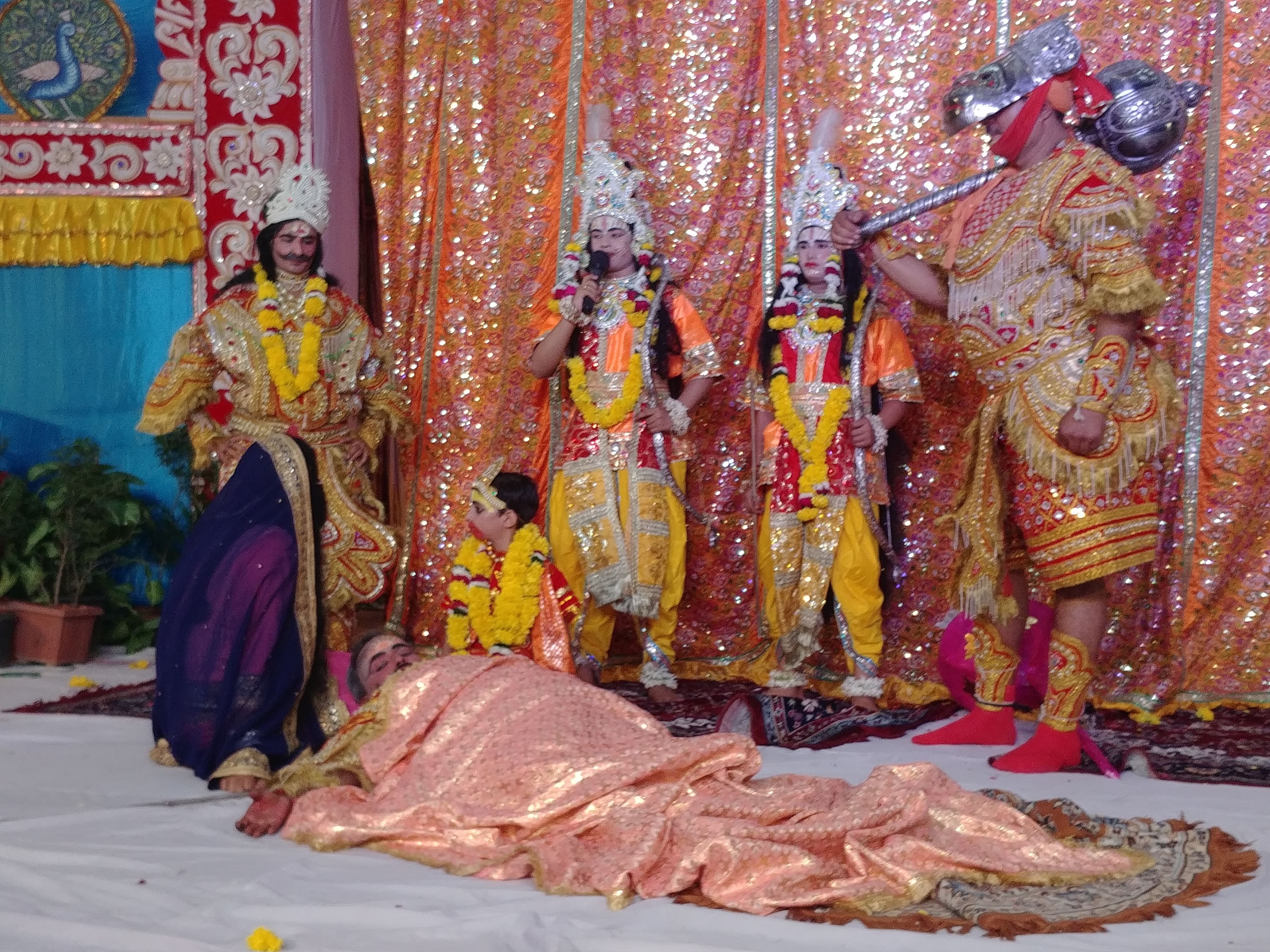
Ramlila in Mathura is a no-frills affair untouched by either technology or the changing times. It boasts of dialogues and bhajans in Braj bhasha, performances held to the beats of the dholak and tunes of the harmonium, and the odd keyboard, nothing else.
According to Jayanti Prashad Aggarwal, president of the Shri Ramlila Sabha in Mathura, the holy town was alone in India to hold the production in its original essence, the ‘Pracheen Siddha Ramlila’ as it’s known.
“We make our best efforts to keep the Ramlila as traditional as possible,” Aggarwal told ThePrint. “Our Ramlila is based on Tulsi’s version of Ramayan.”
According to Aggarwal, the Ramlila had a 140-year history in the city.
The only modern addition perhaps is an improvised Bollywood song from the 1996 movie Raja Hindustani. In the scene depicting Bali Vadh, when he is slain, his widows sing “O Bali, O Bali, jaana nahin…” to the tune of “Pardesi, Pardesi, jaana nahi”. Asked about the addition, Aggarwal said it was adopted a long time ago and they no longer “use much of modern-day Bollywood songs”.
The funding solely comes from donations from locals. According to the sabha, it has collected around Rs 30 lakh this year.
(By Rajgopal Singh in New Delhi, Chitleen K. Sethi in Chandigarh, Sakshi Arora in Bhopal, and Nikhil Rampal in Mathura)


